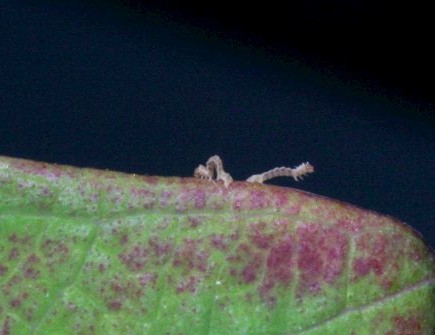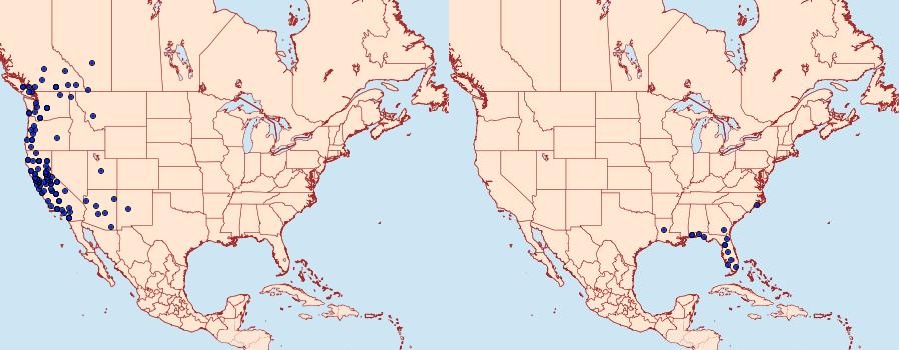The genus Nemoria provides an excellent study group for exploring the evolution of host plant relationships in a group of closely related Geometrid moth species. Some species are generalists, able to use a large number of separate host plants in very different plant families for their larval stages. These polyphagous species often have wide geographic ranges. Other species are highly specialized and dependent on one very particular species (or maybe two very closely related speices) for the successful development of their caterpillars. These species might have a very restricted range that maps closely onto the distribution of that plant species.
In the Appalachian region of the eastern US, populations of Nemoria tuscarora are only found at higher elevation swamps or bogs in association with their particular host plant, a St. John’s Wort, Hypericum densiflorum.
Above, tiny hatchlings of Nemoria tuscarora from western Maryland on the edge of a Hypericum leaf in the lab – these newly emerged caterpillars are no larger than an eyelash.
In the southeast, principally in Florida, Nemoria outina is only found in association with Ceratiola ericoides, a heath found in dry sandy pinelands.
Above, the green form of a Nemoria outina caterpillar on Ceratiola. Image © Michael Canfield.
Among the more widely adapted species, Nemoria darwiniata in the western US has larvae feed on leaves and flowers of a broad range of western trees and shrubs including oaks (Quercus spp. in the Fagaceae); members of the Rose family, including hawthorn and (Holodiscus discolor, Rosaceae); Black Hawthorn (Crataegus douglasii, Rosaceae), and Antelope Bitterbrush (Purshia tridentata, Rosaceae), as well as some species of willows, currants, and sumacs among others. The map below shows the geographic range of the polyphagous Nemoria darwiniata at left, ranging from New Mexico to Alberta and British Columbia and Nemoria outina at right, centered around central Florida and the Gulf coast.



